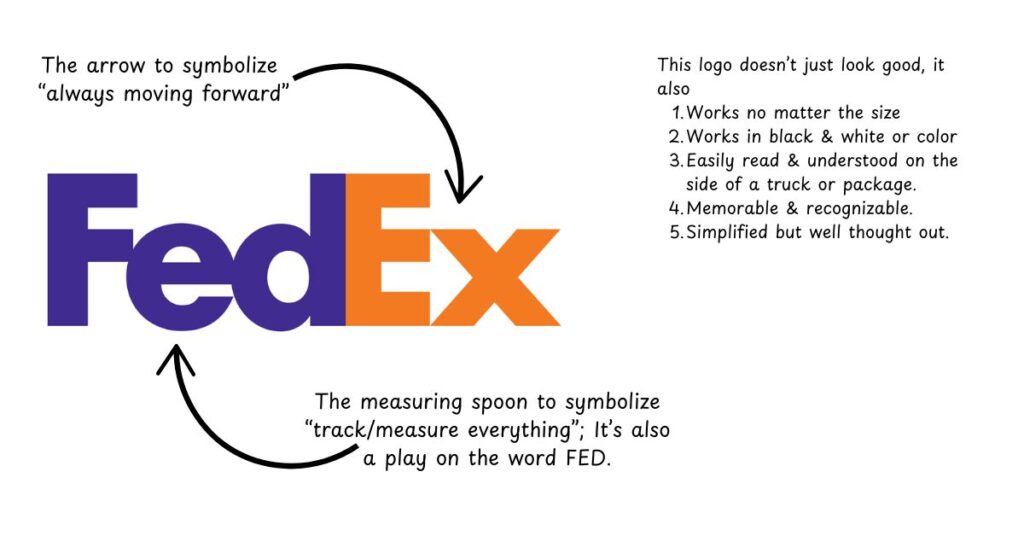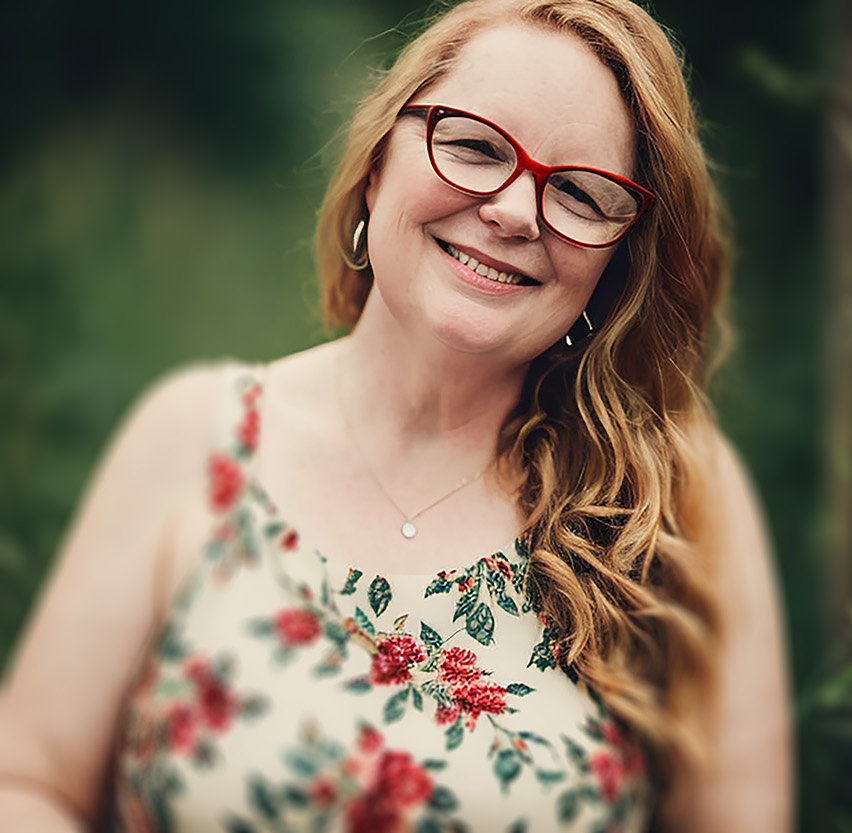Have you ever wondered why some beautiful, artsy creations don’t work well as logos, or why a stunning painting might fail as a book cover?
As both an artist and designer, I’ve witnessed countless creatives struggle with the transition from pure artistic expression to functional design. While art speaks to the soul, design must also serve a purpose.
In my upcoming session at The Well Conference this June 2025, we’ll explore how to bridge this gap, helping you transform your artistic talents into practical design solutions that both inspire and function effectively. You can read more about my breakout, Design for Non-Designers, on The Well Website.
The Art of Problem-Solving
When we think of great design, we often focus on its visual appeal. However, the most successful designs are those that elegantly solve problems.
Take the FedEx logo, for instance. While beautifully simple, its genius lies in how the negative space between the ‘E’ and ‘x’ forms an arrow, subtly communicating movement and direction, perfectly aligned with their service offering. There’s also a measuring spoon in the E of “Fed,” which symbolizes the corporate value of always measuring data towards success. It’s also a clever play on the word “Fed”.

All of that is pretty neat, and I love to geek out over it, but the really impressive part of such a logo is the ability to work in the different situations you find the logo:
- The side of a FedEx truck
- As a sign on a building
- On a receipt for mailing something
No matter the size and location, the logo works. It’s instantly recognizable and just works.
On the other hand, I used to live near a company that I later learned did some kind of motorcycle customization. I only later learned it because, despite driving past the sign for years on my way to church, I would look at the sign and try each time to figure out what on earth that even said. I couldn’t even read it clearly enough to Google it.
The artist in me appreciated the cool shield design with the wings and fancy script. A lot of skill went into drawing all of that. I’m sure, up close, in front of you, it looks amazing. However, when I’m driving down the highway at 55 mph, I can’t squint and try to read it. I need to see it fast. I need to remember it. I couldn’t even read the name.
That logo did not work. It looked amazing, but it didn’t communicate with anyone driving by. The logo was art, not design. This distinction between art and design is crucial for faith-based creatives.
Design can’t just be about beauty, though beauty is important. Design needs to help us amplify the message we’re trying to communicate and achieve the goal we have in mind for the project. Your artistic gifts can be channeled into solutions that not only glorify God through their beauty but also serve your audience’s practical needs.
The greatest challenge I see creatives face is shifting from “How can I make this beautiful?” to “How can I make this beautiful AND functional?” It’s about adding purpose to your palette.
Design Fundamentals
In my breakout session “Design for Non-Designers,” we’ll explore practical techniques to transform your artistic intuition into design solutions. But here’s a quick win you can implement today: Before starting any design project, write down how people are going to interact with this design, what you want them to do, and some specific problems your design needs to solve.
For example, a flyer for a church event needs to work in print, hanging on a community bulletin board, and:
- QUICKLY communicate the important information (What, When & Where)
- Attract the people we’re trying to reach (young adults)
- Tell interested parties what the next step is (RSVP at a link)
By starting with these objectives, you’ll find your artistic choices naturally align with practical needs, resulting in designs that speak to your intended audience.
Moving Forward
The world needs creatives who can bridge the gap between artistic expression and practical solutions. At The Well, we’ll dive deeper into these principles, equipping you with tools to create designs that serve both beauty and purpose. Whether you’re designing for ministry or the marketplace, remember: great design isn’t just about making things pretty – it’s about making things work beautifully.
Kimberly Eddy helps service-based businesses and creative entrepreneurs grow through strategic WordPress websites that actually work. With over 30 years of graphic design and 20 years of web design experience, she specializes in transforming “pretty but not performing” websites into effective business tools, making impactful design accessible through practical guidance explained in plain English. Kimberly holds several certifications, including in Digital Marketing and Google Analytics. Connect with Kim at websitesovercoffee.com.

